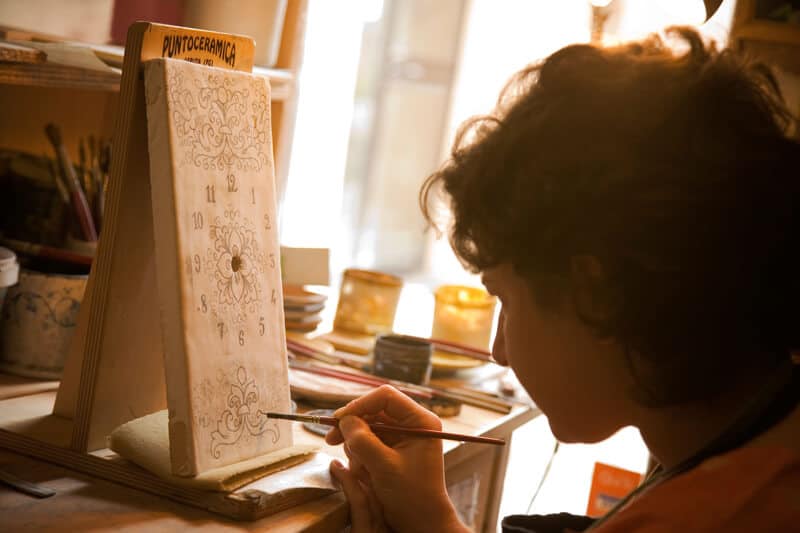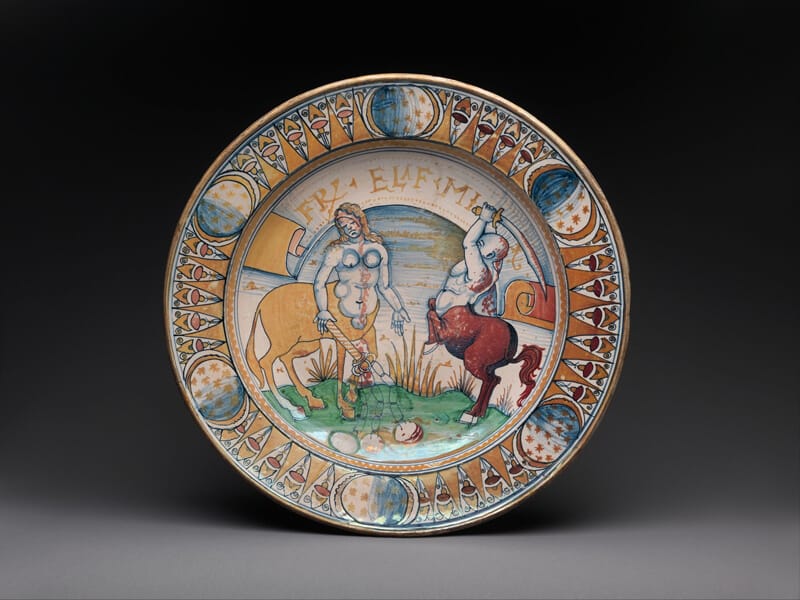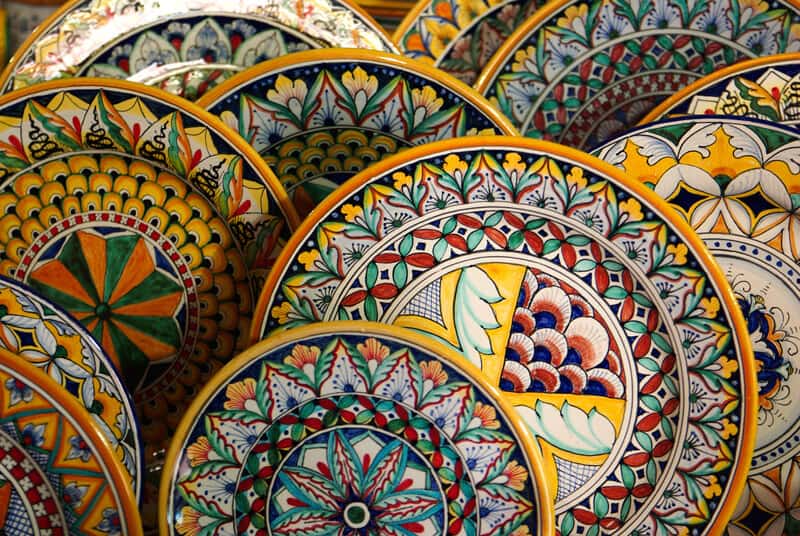Terracotta, maiolica and ceramic traditions in Umbria
Umbria is known as Italy’s fertile cuore verde (green heart). The region’s natural wealth is cheerfully interwoven with incredible art offerings which permeate throughout the territory. It’s no wonder that the rich clay soil, verdant woodlands and plentiful water sources sculpted the ancient ceramic traditions of terracotta and maiolica.
Ceramic Cities to Visit
Showrooms and workshops throughout the charming Umbrian towns of Deruta, Gualdo Tadino, Gubbio (these first three are a divine holy trinity for ceramic lovers) and Orvieto are filled to the brim with brightly coloured gorgeously patterned ceramic wares, each offering their own distinct styles, hues and designs.
The villages of Città di Castello and Umbertide are also deeply connected to the majolica industry and are testament to the craft’s creative and economic evolution. Umbertide’s ceramicists coat their pieces in a magical metallic black glaze known as nero fratta which, when fired, creates striking iridescent reflections. Artisans in Città di Castello have continuously innovated earthenware to keep the traditions alive using local armorial insignia and relief work on their clay pieces.
Centuries of ceramic tradition
The inherent aesthetic value of any creation in Italy is paramount, with many a palazzo, fountain and church lovingly adorned with various sculptures and artwork. This was true even in antiquity, when everyday household items such as plates and cups were given their rightful importance. Umbria’s beautifully designed earthenware traditions date back to the Etruscans, who developed the art of bucchero. These historic ceramic pieces were made of sandy clay and used to decorate Etruscan places of devotion. The refined techniques, artistic skills and keen knowledge of these artisans continued to be passed down from generation to generation.

Production of terracotta began in the 13th century while more artistic and ornate ceramic ware, including Italian maiolica, later bourgeoned in the 14th, 15th and 16th centuries with the arrival of the Renaissance. Italy’s Mediterranean neighbour of Spain has been credited with bringing the vibrant pottery practice of maiolica to Italian shores. By the mid-14th century, colourful imported wares made by Spanish artists were all the rage and local artisans in Central Italy, including the city-states of Florence and Siena and their surrounding villages, picked up on the new trend. Italian artisans developed their own maiolica techniques and their creations were soon highly sought after. Artisans often received requests from nobility and wealthy families for glorious commemorative pieces to mark special occasions, including engagements, weddings, and important political and business affairs.
A century later, artists, and in particular, sculptors like Florence’s supreme Luca della Robbia, fuelled by their creative passions, added life to any and every object they could find, including ordinary household wares such as jars, plates and serving vessels, turning them into one-of-a-kind works of art. Robbia was known for innovating the glazed terracotta technique ensuring his gleamingly milky white and vibrantly variegated earthly creations would sustain the wear and tear of the outer elements.
The regions of Central Italy vibrated with artistic energy and handcrafted ceramics became a true vocation for Umbrians, whether creating lusterware, exploring Renaissance grotesque style or innovating designs for architectural use. Long Standing traditions were established amongst artisans in local villages as customized patterns and colours passed down through familial lines, together with secret techniques for glazing and firing in the kiln.

And then, it all fell to pieces. The arrival of the industrial revolution brought a sharp decline to local, handcrafted art. Unable to survive, many artisans were forced to shutter their workshops. Thankfully, 700-year-old traditions aren’t easily erased. Today, the craft has had its own 21st century Renaissance and Umbria’s glorious hill towns are once again chock full of magnificent ceramics. Visitors can spend days wandering about the many workshops and village stores to find their favourite artistic designs.
Deruta, heart of ceramics in Umbria
Head to Deruta, ceramic central, if you only have a day. The heart of this earthenware region was cited as terra vasaria (the land of pottery) back in the 13th century. Lose yourself in the maze of never-ending discovery of the more than 200 Deruta ceramic workshops, famous for their production of world-renowned brightly coloured and refined decorative ware. The town’s Museo Regionale della Ceramica (Ceramic Museum) is a beautiful ode to clay and one of Italy’s oldest (yes, there are a few earthenware institutes in the peninsula), a definite must for any ceramic afficionado. Though beware ceramic collectors, puttering around this much pottery might lead to an addiction.
